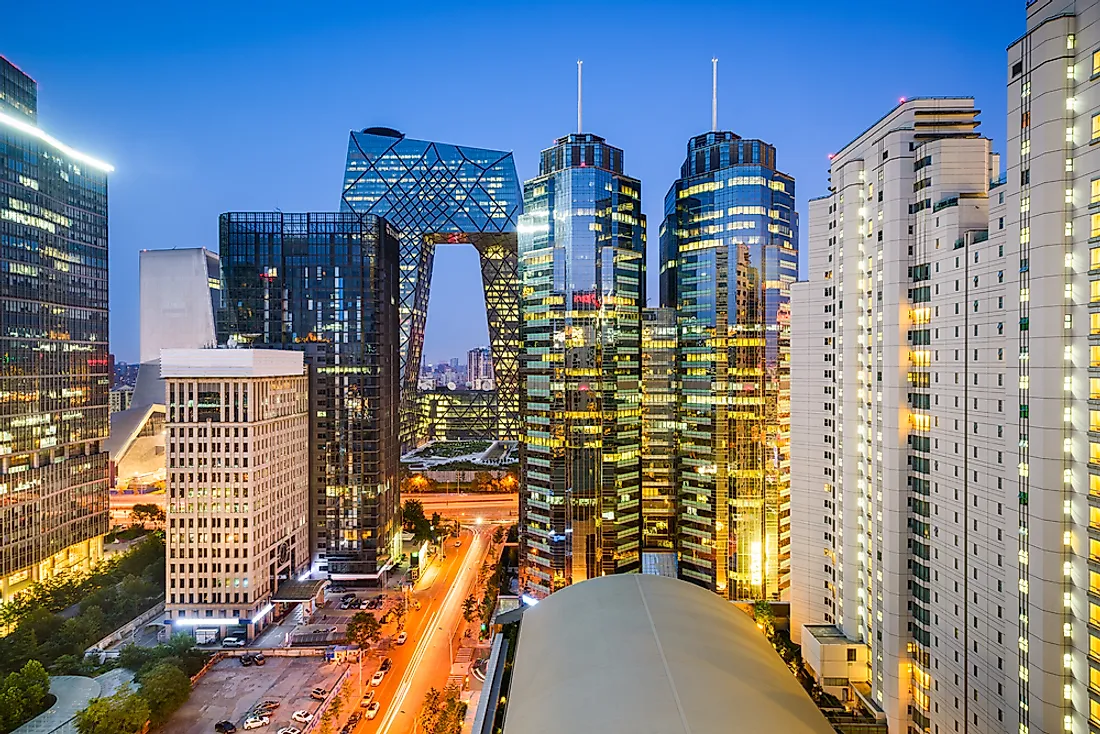The establishment of Beijing as the capital city of modern China can be traced back to complex historical reasons tied to geo-strategic and economic factors. Let us examine the dynamic behind this pivotal choice and why other potential candidates like Nanjing and Xi’an were less viable options despite past precedents.
Security and Access to Allies
When the Chinese Communist Party led by Mao Zedong seized power in 1949, stability was a crucial priority given the turmoil of war and revolution. Beijing’s defensible position inland provided shelter against foreign threats while proximity to ports like Tianjin facilitated international ties. More importantly, the fledgling communist government benefited from the Soviet Union’s willingness to protect territories bordering Russia - an advantage not shared by other inland cities. This geostrategic calculus weighed heavily in favor of Beijing.

Avoiding Connotations with Previous Regimes
The new communist leadership understandably wished to dissociate from the ousted Kuomintang (KMT) regime headquartered in Nanjing. While past capitals, Nanjing bore strong symbolic links to Chiang Kai-shek’s defeated nationalist government whose removal paved the way for communist rule. Similarly, Xi’an held prestige as the origins of Imperial China but lacked relevance to Mao’s revolutionary vision. Only Beijing could satisfy objectives of a clean political slate and unburdened historical baggage.
Development Advantages of Eastern Regions
By 1949, China’s economic center of gravity had long shifted eastward stirred by foreign encroachment and domestic modernization. Coastal cities spearheaded by Shanghai dramatically outpaced peers, pulling resources and investments inland via transportation arteries. Yet Nanjing and Xi’an lacked comparable connectivity due infrastructure limitations and interior positioning far from burgeoning industrial and commercial activity. Only Beijing offered a favorable balance as the terminus of infrastructure networks extending throughout China’s most developed regions.
Inheriting Over 600 Years of Imperial Traditions
While discontinuities accompanied political revolutions, certain institutional continuities aided stability. For over six centuries since the Ming Dynasty, Beijing served as China’s historic capital endowed with symbolic value as the nation’s central administration hub. Retaining this capital status upheld a degree of perceptible order and familiar administrative architecture despite regime changes - invaluable at a time of immense societal flux. Other alternatives simply lacked such a distinguished place in national identity and collective memory.
Limited Development Prospects Elsewhere
By the 1940s, both Nanjing and Xi’an found themselves handicapped by various constraints that diminished long-term viability as the capital. Nanjing suffered loss of population and infrastructure during WWII while geography confined expansion. Meanwhile, Xi’an’s isolation left it disconnected from China’s industrial and trade centers along the coast. Only Beijing offered spacious land and coordination advantages befitting a modern capital of China’s rising global prominence. Its selection allowed maximizing developmental potential across political, economic and societal fronts for generations to come. In summary, prudent considerations around stability, continuity, strategy and development guided China’s post-1949 choice of Beijing over other past capitals that now inadequately met the demands of a new era. Retaining Beijing consolidated the revolution’s authority while laying foundations for sustainable progress into an uncertain future.
Integrating Domestic and External Functions
To fulfill its capital role, Beijing underwent thorough rebuilding that prioritized improved living standards alongside representing China’s rising global stature. Master plans integrated civic and cultural facilities with administrative headquarters to strengthen coherence between the city’s domestic and external functions. Evolving transport networks better connected Beijing with other regions as an administrative nerve center while new embassies and consulates reinforced its diplomatic visibility abroad. Ambitious construction drove growth as surrounding Hebei province developed into an economic powerhouse.
Ascendance as a Knowledge and Innovation Hub
Since the 1990s, Beijing cultivated emerging industries and the knowledge economy to diversify from reliance on government institutions. Top universities like Peking and Tsinghua established comprehensive research campuses, incubating China’s technology champions alongside international science parks and business districts. The city attracted expatriate talent through international schools alongside government outreach programs. Today Beijing houses over 7,000 high-tech firms and accounts for a tenth of China’s total research spending as a nexus where policy, capital, talent and ideas intersect on a global scale.
Balancing Conservation and Modernization
While rapid development transformed much of Beijing, authorities recognized maintaining heritage attractions as vital for keeping cultural roots accessible. Large-scale conservation projects and restoration of historic hutong neighborhoods coexist with skyscrapers, preventing total effacement of traditional architecture. Meanwhile the Forbidden City underwent meticulous renovations to maintain its majesty. Such balancing acts between protection and facilities upgrading reinforce Beijing’s iconic status as a point where China’s ancient past seamlessly integrates with its vibrant, cosmopolitan present and future.
Cementing Status for the Next Century
As the 2022 Winter Olympics vividly displayed, massive investments continue readying Beijing and surrounding Hebei for emerging opportunities. Cutting-edge environmental policies support transition to green energy across the capital region. Meanwhile megaprojects like the new Daxing International Airport and high-speed rail links consolidate first-tier city status and connectivity nationwide. These bold initiatives lay the groundwork for Beijing to stay apace of 21st century requirements as China’s political nerve center and a global destination city for many decades ahead.
In summary, Beijing’s choice as the modern Chinese capital a century ago proved prescient given the city’s many advantages that aligned with the country’s subsequent development trajectory. While other historic capitals played vital roles, only Beijing maximized potential for stability, continuity, prosperity and the nation’s emergence onto the global stage in the present era. Its selection shaped not just China’s political geography but socioeconomic transformation through the decades.

 Accuracy vs Accessibility in Historical Television Shows
Accuracy vs Accessibility in Historical Television Shows